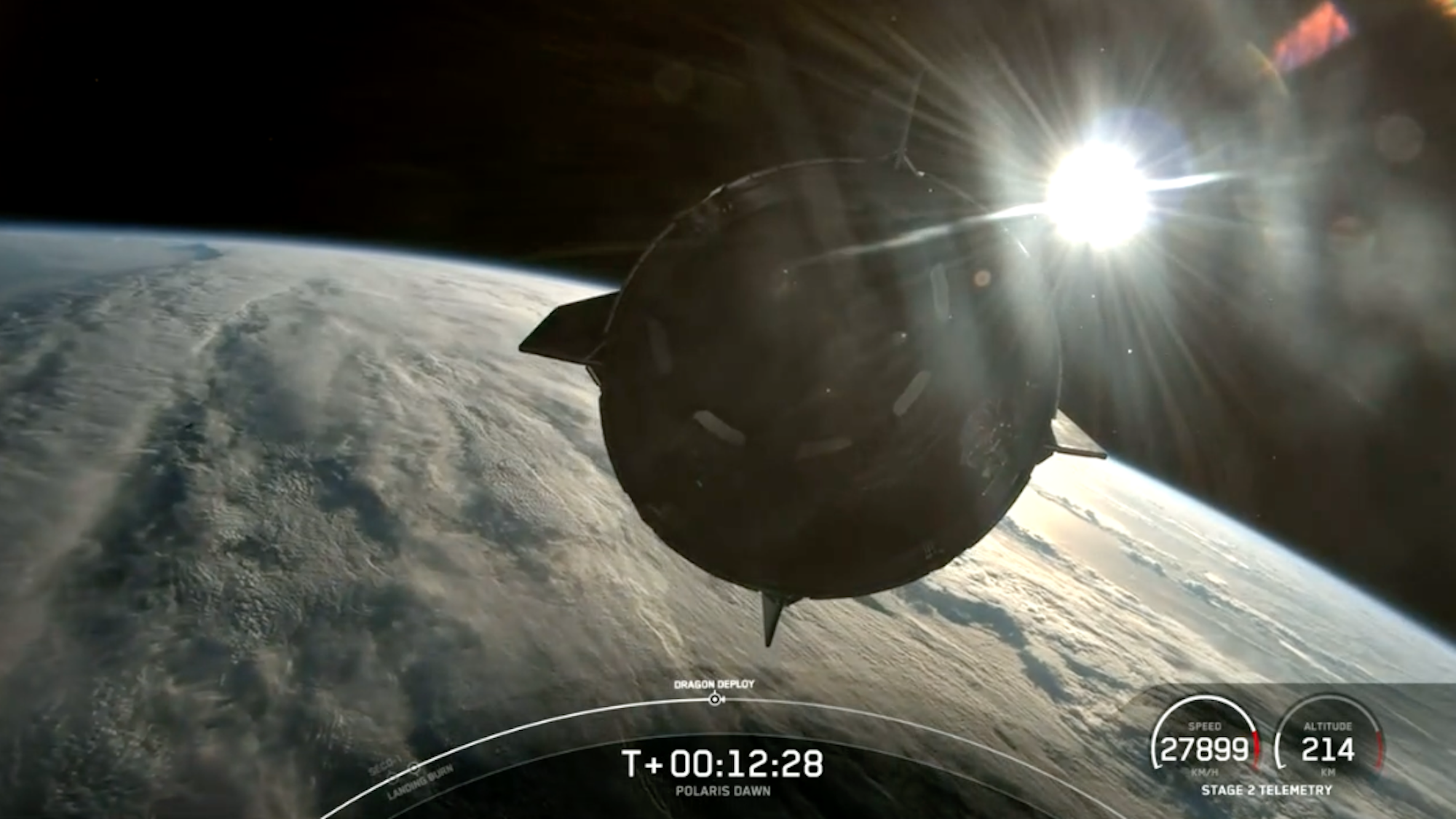

After multiple technical and weather-related delays, the milestone Polaris Dawn mission launched aboard a SpaceX Falcon 9 rocket at 5:23 AM EST from NASA’s Kennedy Space Center in Cape Canaveral, Florida on Tuesday. Its four-person crew includes the first two SpaceX employees to travel into orbit, mission specialists Anna Menon and Sarah Gillis, retired US Air Force Lt. Col Scott “Kidd” Poteet, as well as Polaris Dawn’s commander and benefactor, billionaire businessman Jared Isaacman.
[ Related: How does Polaris Dawn fit into the history of spacewalks? ]

Although the six-day trip will make history for the first-ever commercial spacewalk, the mission is not Isaacman’s first sojourn into space. In September 2021, the founder of private air force contractor, Draken International, oversaw and funded the SpaceX Inspiration4 mission which reportedly raised an estimated $250 million for St. Jude Children’s Research Hospital. Inspiration4 achieved its own set of space travel benchmarks with the first-ever commercial, all-amateur crew.
Polaris Dawn was initially scheduled to depart on August 26 before SpaceX bumped back the launch to perform additional preflight checks. A helium leak within equipment supporting the Falcon 9 rocket postponed it yet again the following day, followed by multiple additional pushbacks due to inclement weather.
“We wouldn’t be on this journey without all 14,000 of you back home and everyone else cheering us on,” Space.com reported Isaacman radioing to SpaceX mission control as the Crew Dragon capsule deployed into orbit. “We appreciate it. We’re gonna get to work now.”
[Related: SpaceX will attempt the first commercial spacewalk.]
Crew Dragon’s starting elliptical orbit included an apogee of roughly 745 miles and perigee of around 118 miles above Earth. The capsule will then travel to its highest orbital altitude of about 870 miles, marking the furthest any human has traveled since the Apollo 17 astronauts during the program’s final mission in 1972. Following day two in space, Crew Dragon will descend to an apogee of 435 miles and remain at altitude for the remainder of its trip. It is during this time that Polaris Dawn’s crew will attempt to complete the first commercial spacewalk, also known as extravehicular activity (EVA). Apart from making history, the EVA is principally intended to demonstrate SpaceX’s new EVA spacesuits. Until now, the company has only utilized a set of intravehicular (IVA) suits.
[Related: SpaceX reveals new sleek spacesuits ahead of upcoming historic mission.]
During the estimated two-hour excursion, Isaacman and SpaceX mission specialist Sarah Gillis will alternate roles as the pair leaves Crew Dragon to showcase their new suits maneuverability and capabilities. Menon and Poteet, meanwhile, will remain inside the cabin. But because the capsule does not feature an airlock, the interior will also remain depressurized for the roughly 120-minute experiment, thus requiring the two to also suit up with the new EVA attire.
Day four will primarily focus on a demonstration of SpaceX’s growing Starlink satellite internet constellation array among numerous other experiments before Polaris Dawn begins a deorbit burn on day five. Six days after launch, the Crew Dragon capsule and its inhabitants will finally parachute into one of several possible landing spots off Florida’s coast before recovery workers help transport them back to land.